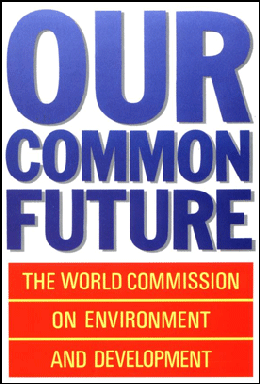Let’s be honest: I have a complicated relationship with the word “sustainability.” Too often, it’s a term that sparks feel-good rhetoric rather than driving the meaningful action we urgently need. As we close out the year, I find myself reflecting on the incredible conversations I’ve had with executives and professionals across Europe and Asia. Their insights have been invaluable, challenging my own views and helping refine what sustainability might actually mean in practice.
This newsletter is not just about my take—it's about hearing from you, the readers, too (thank you for being part of this journey). Together, let’s dive into the complexities and attempt to unpack this loaded concept. This is Part 1 of a two-part exploration, and I hope it sparks the same critical thinking and exchange that inspired me this past year
For years, sustainability has occupied a central place in global discourse, from academic debates to corporate boardrooms. But despite its ubiquity, the concept often feels intangible, diluted by jargon, and constrained by a focus on definitions.
The Brundtland Report of 1987 provided what many consider the seminal definition of sustainable development: “Meeting the needs of the present without compromising the ability of future generations to meet their own needs.” At first glance, it’s a definition of profound clarity. Yet, upon deeper reflection, it reveals profound limitations, particularly in its reliance on the term "needs."
The Complexity of Needs
Who defines these needs? Are they static or dynamic? Consider the evolution of what we perceive as essential. In 1987, could we have imagined that access to high-speed internet or advanced medical AI might one day be seen as fundamental? Moreover, can we project the needs of future generations, born into realities we can scarcely imagine today?
These questions expose a critical gap in sustainability discourse: the tension between universality and specificity. Needs differ by geography, culture, and context. The requirements of a subsistence farmer in rural India are worlds apart from those of a Silicon Valley entrepreneur. Bridging this gap requires moving beyond rigid definitions toward a more fluid, context-sensitive understanding of sustainability.
The Brundtland definition, while foundational, raises more questions than it answers, especially as it gets conflated with buzzwords like CSR, ESG, and the SDGs—concepts that sometimes feel as though they’ve been absorbed into a corporate vocabulary that is well-meaning but muddled.
However we are seeing a connective bias at play: the need to simplify things, the reality bias. You just need to open and read the report to realize that ‘sustainability’ was not the notion defined but rather ‘sustainable development’ seen as “a process of change in which the exploitation of resources, the direction of investments, the orientation of technological development; and institutional change are all in harmony and enhance both current and future potential to meet human needs and aspirations”.
The concept of needs was clearly referencing the essential needs of the world’s poor to which overriding priority should be given.
The document also linked sustainable development to limits: The concept of sustainable development does imply limits - not absolute limits but limitations imposed by the present state of technology and social organization on environmental resources and by the ability of the biosphere to absorb the effects of human activities.
The roadmap to enable sustainable development was highlighted as:
reviving growth;
changing the quality of growth;
meeting essential needs for jobs, food, energy, water, and sanitation;
ensuring a sustainable level of population;
conserving and enhancing the resource base:
reorienting technology and managing risk;
and merging environment and economics in decision making.
This reference to ‘limits’ is obviously a reminder to the ‘limits to growth’ published by Donella Meadows and the Club of Rome in 1972 where ‘sustainable’ was referenced in the conclusion:
“It is possible [...] to establish a condition of ecological and economic stability that is sustainable far into the future. The state of global equilibrium could be designed so that the basic material needs of each person on earth are satisfied and each person has an equal opportunity to realize his individual human potential”
From Definition to Action: Sustainability as a Journey
In revisiting my previous reflections, I’ve observed a recurring theme: sustainability cannot be a static goal nor can it be defined as a ‘state’. In my 2019 writing, I emphasised the urgency of transitioning to new economic and environmental systems. By 2022, my focus shifted to the importance of purpose (raison d’être) as a driver of meaningful change.
Today, I view sustainability as a way of being—dynamic, evolving, and deeply personal. It calls on us to align our actions with our values, recognizing the interconnectedness of people, economies, and ecosystems.
However I am fully aware and grateful for being able to spend time on understanding my own needs and aligning them with my values. This personal journey that took 10 years cannot be imposed on others but I don’t see how one can possibly design grandiose plans for other human beings without going through that personal journey.
Albert Camus once warned, “To name things wrongly is to add to the misfortune of the world.”
In the context of sustainability, the misfortune lies in reducing it to a checklist of metrics or a corporate buzzword. Sustainability, at its heart, is about balance: harmonizing progress with nature preservation, channeling human ambition within planetary boundaries, and meeting immediate needs while cultivating long-term aspirations…with a clear universal definition of needs.
In the second part of this article, I’ll delve into the insights gathered from the hundreds of thoughtful responses to our sustainability survey. Together, we’ll explore the patterns, contradictions, and opportunities revealed, aiming to uncover actionable perspectives that can redefine how we approach this critical challenge.







Hi Arnaud, I've really enjoyed reading
- how you critically address the (mis)use of the term as it is immensely broad, which can easily lead to a blurred conception of the actual term (and the intention for its use in 1987)
- how you reframe the term by coming back to its definition in the sense of a dynamic process.
Employing it as a guiding principle and defining it personally is actually what we need to align our daily actions and decisions with the goal of a thriving world.
I think the IDGs could be a powerful tool to adopt such a personalized sustainability approach.
Looking forward to part 2!